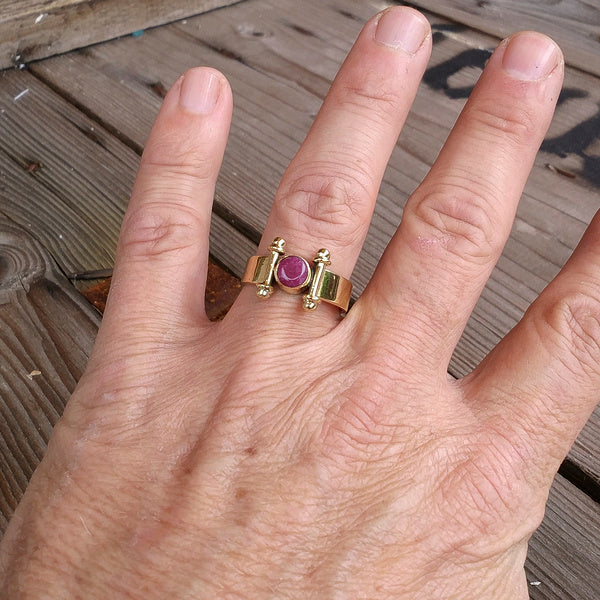The Dorje or Vajra

The dorje (in Tibetan), vajra (in Sanskrit) is a tantric ritual instrument used in the practices of Tibetan and Indian Buddhism.
The dorje (vajra) symbolizes the union of method and wisdom, the cornerstone of Buddhist practice, the cause of liberation from the mental obscurations that afflict humanity.
The word dorje (vajra), also means lightning and diamond .
Lightning illuminates the darkness of the night, so the Dharma (the teaching of the Buddha ) dispels the darkness of ignorance.
The hardness of the diamond symbolizes the perseverance of the practice which brings out the pure nature of the mind, which, like the precious gem, cannot be contaminated by temporary impurities.
The dorje (vajra) has a scepter shape and is used in Buddhist bell rituals. The dorje (vajra) is held in the right hand while the bell in the left hand.
The dorje (vajra) and the bell together symbolize the feminine and masculine, the opposites and their integration.
The mudra (symbolic gestures used in various religions) of the embrace, which crosses the dorje (vajra) and the bell on the chest, symbolizes the union of method and wisdom that integrates the understanding of the two aspects of reality:
interdependent origination (relative reality) and emptiness (ultimate reality).
The structure of the dorje (vajra) symbolizes other aspects of the Buddha's teaching: the spherical ends represent sunyata (base or primordial aspect of the mind) and its appearance in temporal manifestation (everyday life)
The mirrored form of the dorje (vajra): two lotus flowers coming together represent the union of the two worlds (Samsara and Nirvana).
The petals represent the four Bodisatvas .
The three central circles of the dorje (vajra) represent the bliss achieved by the Buddha spontaneously, without effort and symbolize the six perfections (the six Paramites) that lead to liberation ( Ethics , Generosity , Patience , Perseverance , Meditation and Wisdom ).
The form of the double dorje (vajra), known as Vishavavajra, is used as a seal on important scriptures, and is often placed at the base of statues depicting major Tibetan and Indian deities. The dorje (vajra) is also used as the center of some mandalas.
If worn, it reminds us of the positive qualities and potential of our mind, of which the dorje (vajra) is the symbol, and is a warning not to waste our existence.
Finally, we give you some suggestions to delve deeper into the topic:
-
- Read the meaning of dorje in Italian on Wikipedia
- we recommend this book meaning Buddhist symbols
(courtesy Paolo Aime)















